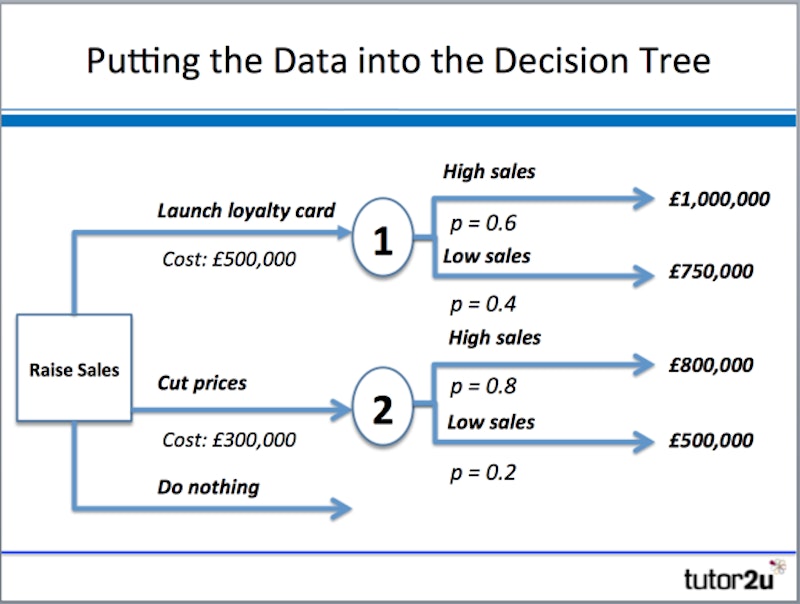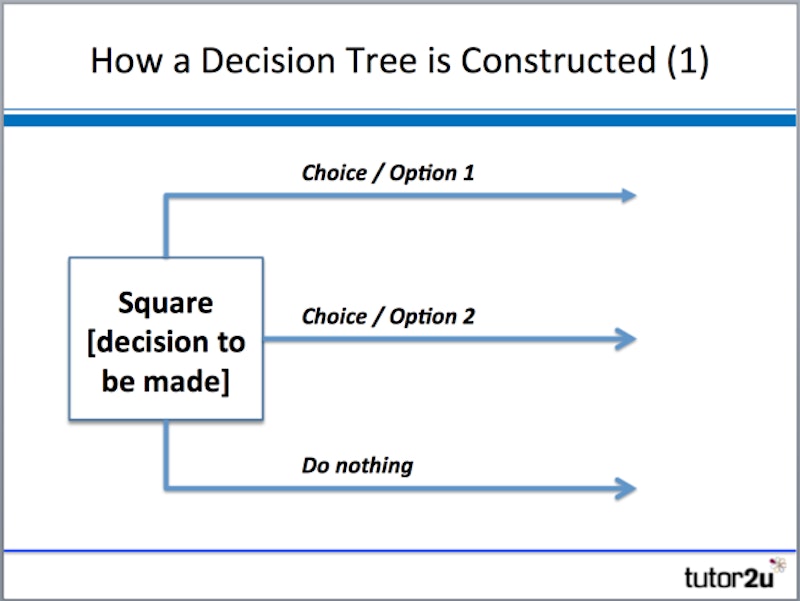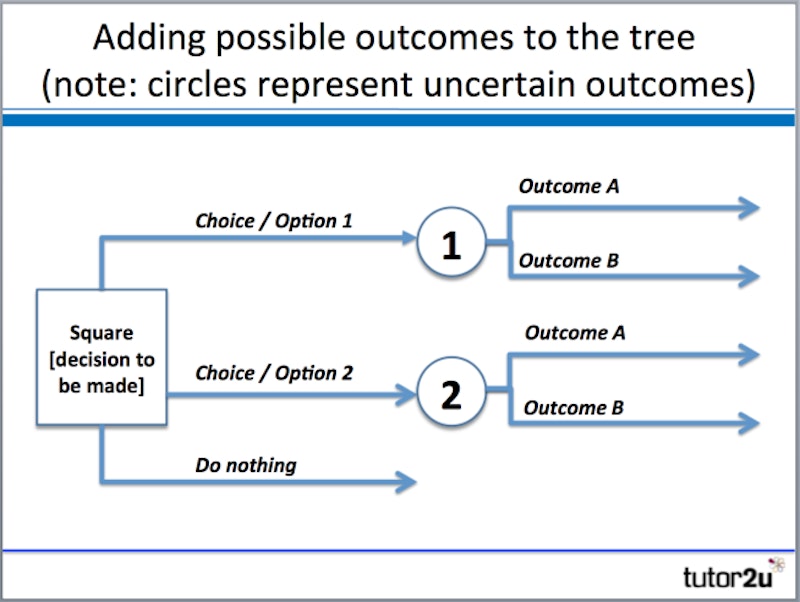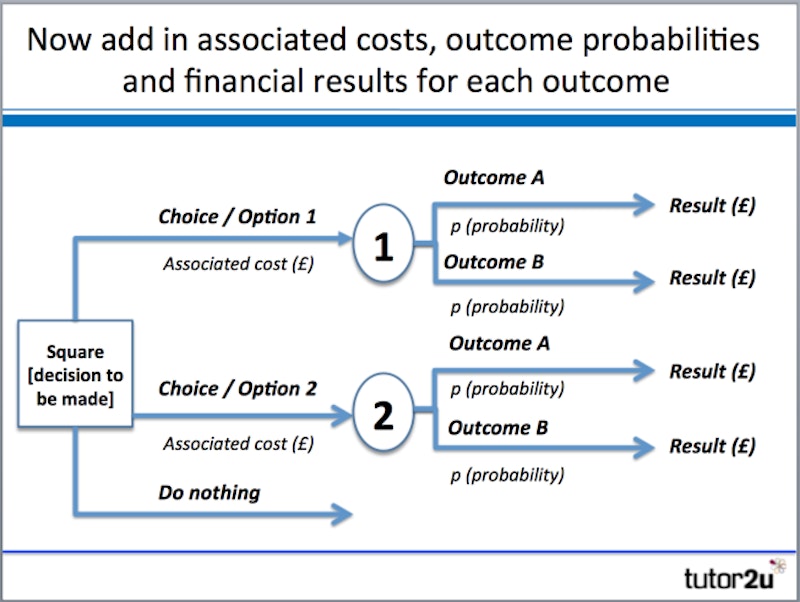Study Notes
Decision Trees
- Level:
- AS, A-Level
- Board:
- AQA, Edexcel, OCR, IB
Last updated 22 Mar 2021
A decision tree is a mathematical model used to help managers make decisions.
- A decision tree uses estimates and probabilities to calculate likely outcomes.
- A decision tree helps to decide whether the net gain from a decision is worthwhile.
Let's look at an example of how a decision tree is constructed. We'll use the following data:

A decision tree starts with a decision to be made and the options that can be taken. Don't forget that there is always an option to decide to do nothing!

The first task is to add possible outcomes to the tree (note: circles represent uncertain outcomes)

Next we add in the associated costs, outcome probabilities and financial results for each outcome.
These probabilities are particularly important to the outcome of a decision tree.
Probability is
- The percentage chance or possibility that an event will occur
- Ranges between 1 (100%) and 0
- If all the outcomes of an event are considered, the total probability must add up to 1

Finally we complete the maths in the model by calculating:
Expected value:
The financial value of an outcome calculated by multiplying the estimated financial effect by its probability
Net gain:
The value to be gained from taking a decision.
Net gain is calculated by adding together the expected value of each outcome and deducting the costs associated with the decision.

Let's look at the calculations. What do they suggest is the best option?
Option: Launch loyalty card:
High sales: (0.6 x £1,000,000) = £600,000
Low sales: (0.4 x £750,000) = £300,000
Total expected value = £900,000
Net gain: £900,000 - £500,000 = £400,000
Option: Cut prices:
High sales: (0.8 x £800,000) = £640,000
Low sales: (0.2 x £500,000) = £100,000
Total expected value = £740,000
Net gain: £740,000 - £300,000 = £440,000
Both options indicate a positive net gain, suggesting that either would be better than doing nothing.
However, cutting prices has a slightly higher net gain & looks the best option of the two considered.
BENEFITS OF USING DECISION TREES
- Choices are set out in a logical way
- Potential options & choices are considered at the same time
- Use of probabilities enables the “risk” of the options to be addressed
- Likely costs are considered as well as potential benefits
- Easy to understand & tangible results
DRAWBACKS OF USING DECISION TREES
- Probabilities are just estimates – always prone to error
- Uses quantitative data only – ignores qualitative aspects of decisions
- Assignment of probabilities and expected values prone to bias
- Decision-making technique doesn’t necessarily reduce the amount of risk
You might also like
Centralised and Decentralised Decision-making (Revision Presentation)
Teaching PowerPoints
Critical Path Analysis
Study Notes

Delayering at the BBC
4th July 2015

Scientific Decision-Making: Waffles, Pizza and Sarnies
20th August 2015

Data Not Intuition Is Key for Startups in the Digital Age
25th August 2017

Resource of the Week - AQA and Edexcel A Level Business
16th October 2017
The dangers of short-term strategy
5th January 2018

Lunchtime Learning with the Calculation Practice Book!
2nd February 2018
Daily Email Updates
Subscribe to our daily digest and get the day’s content delivered fresh to your inbox every morning at 7am.
Signup for emails